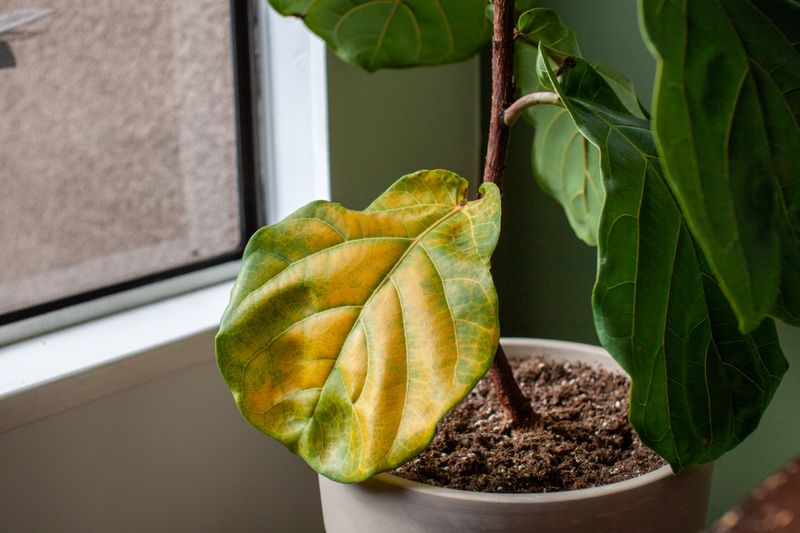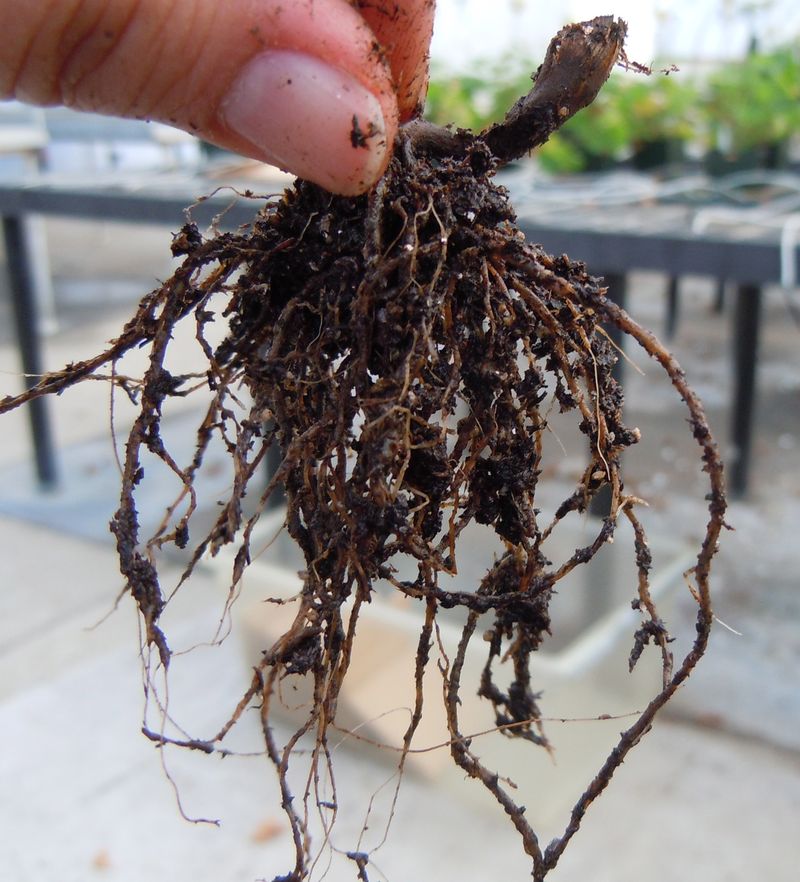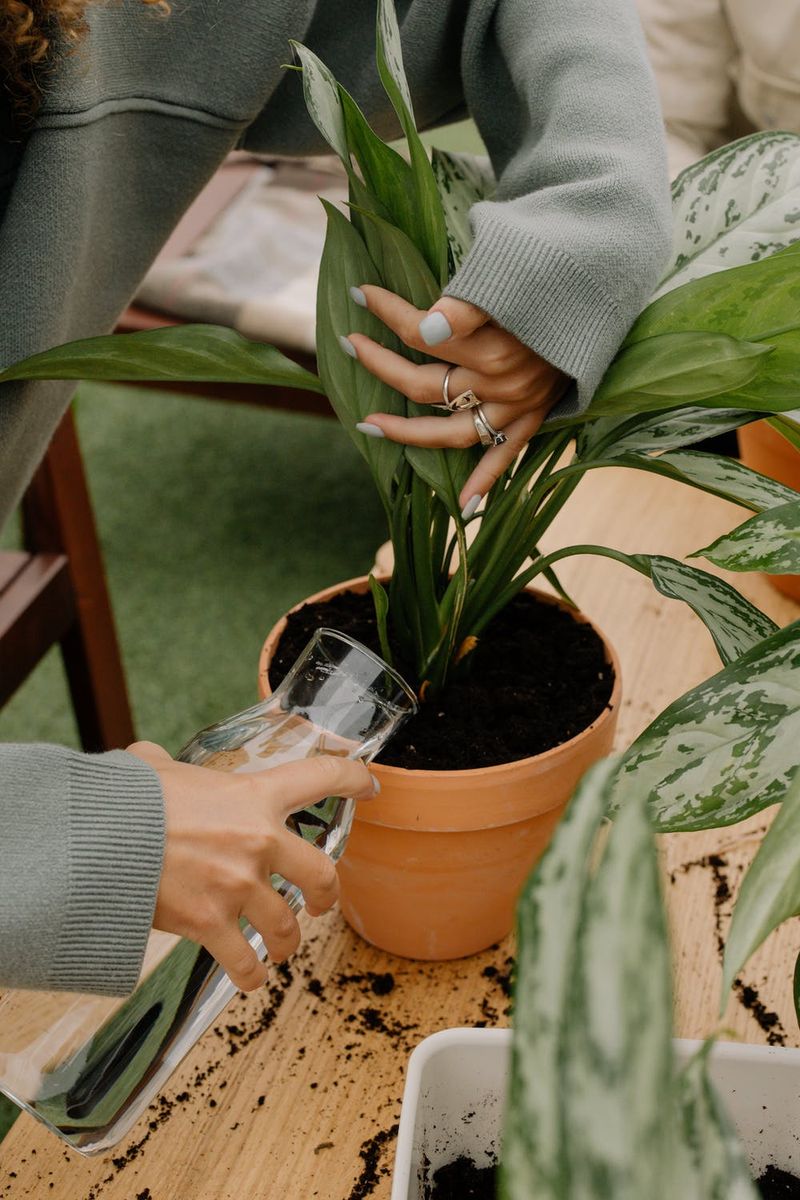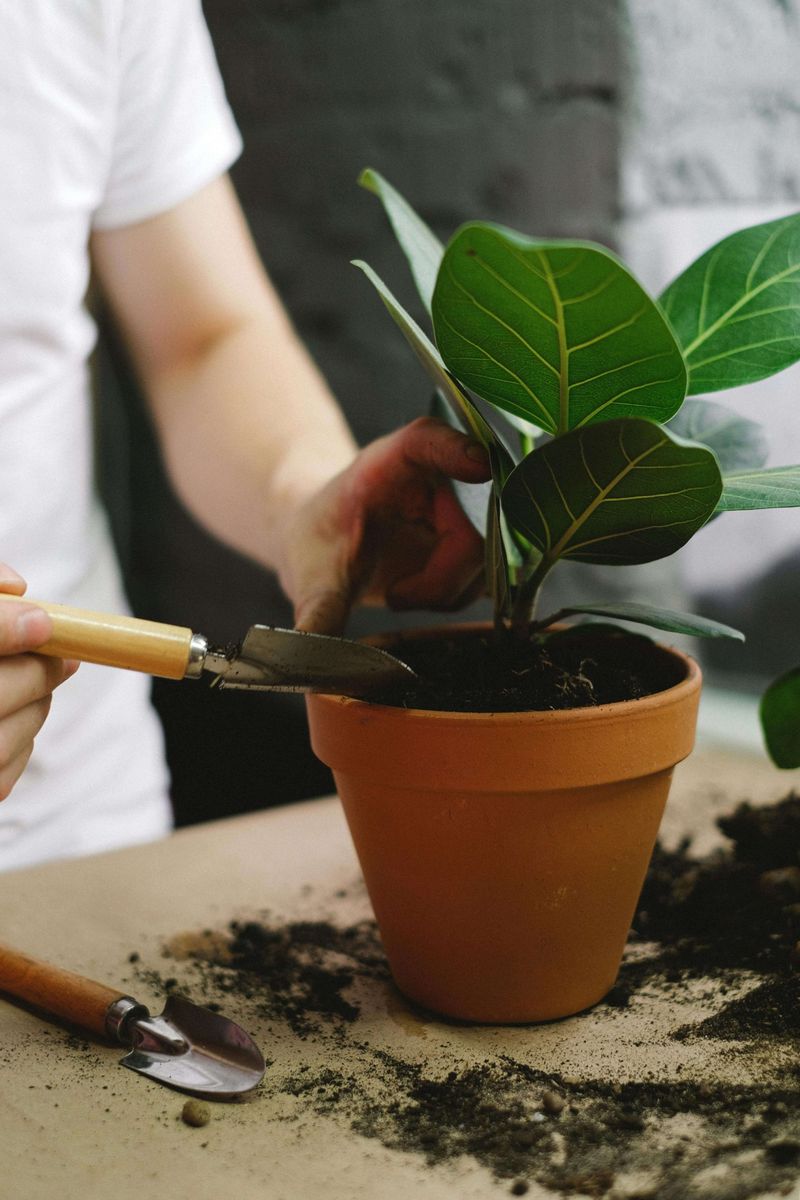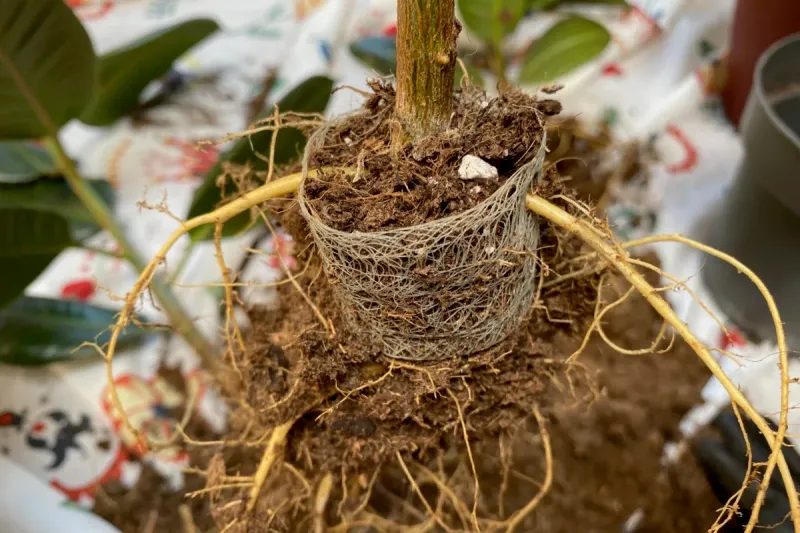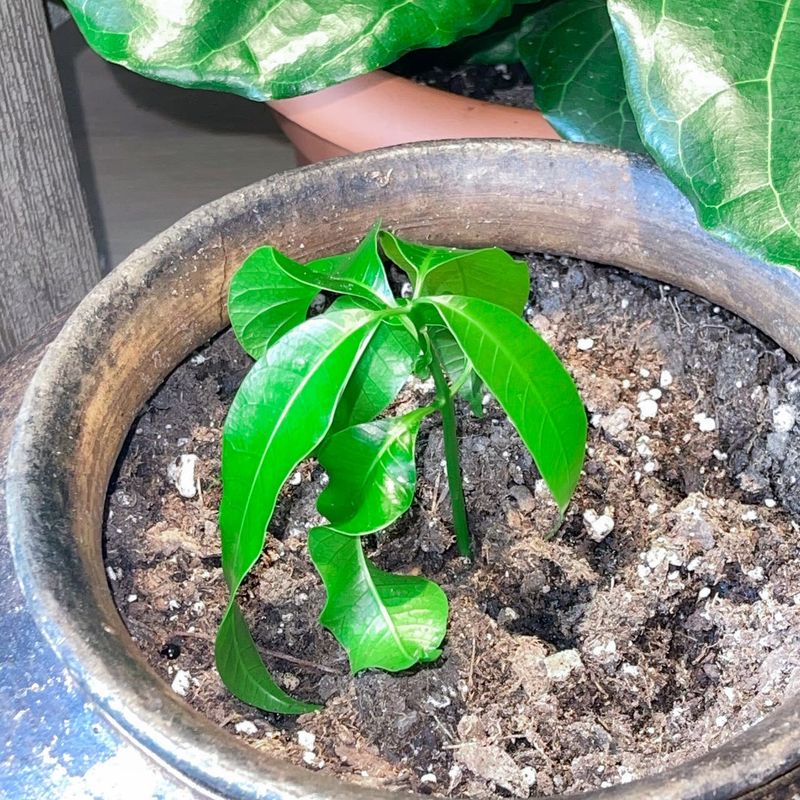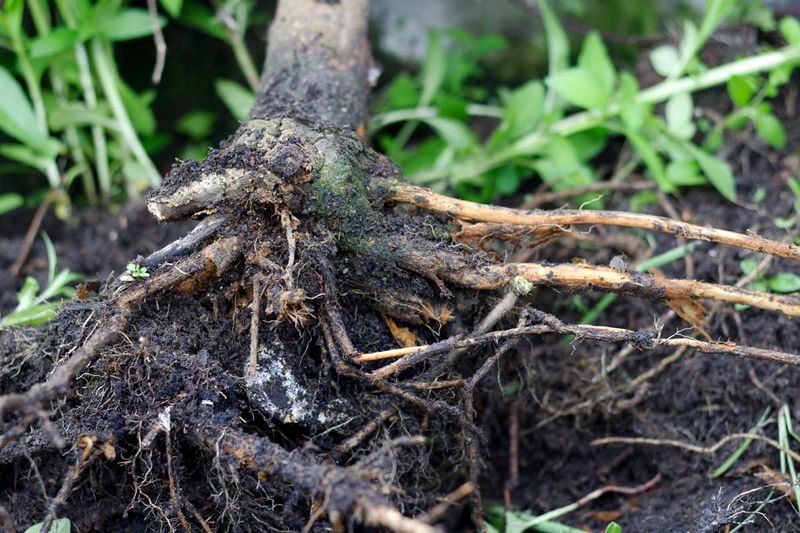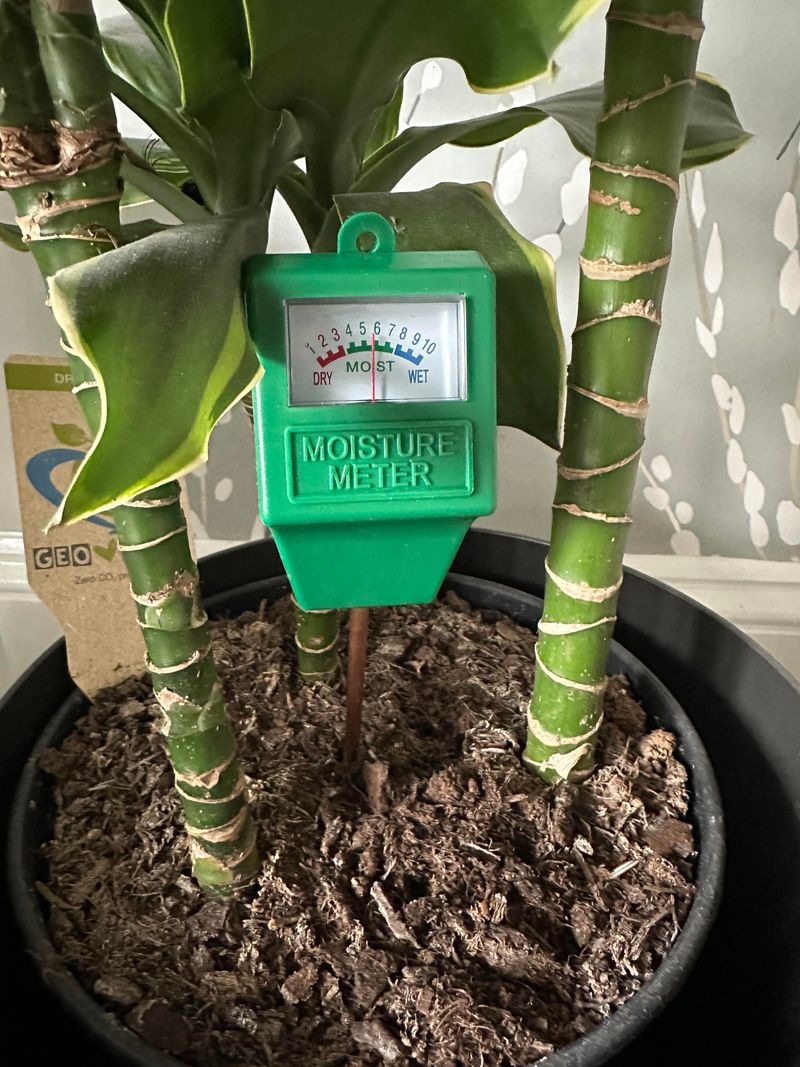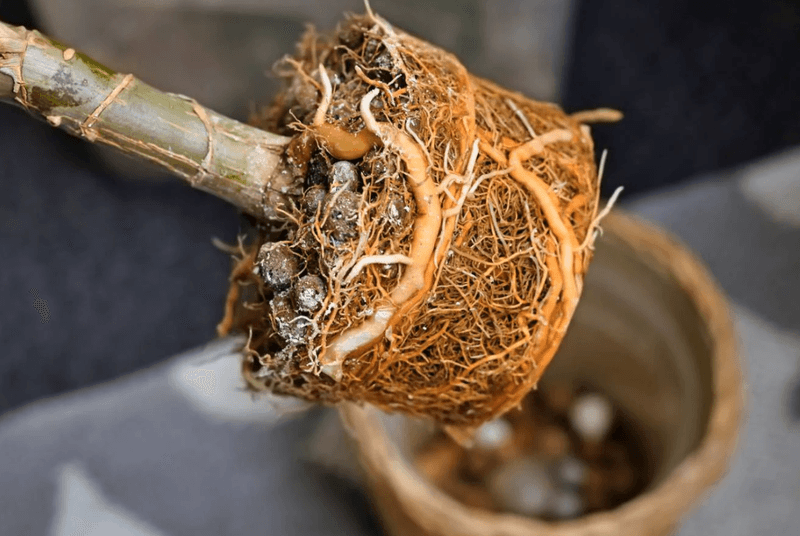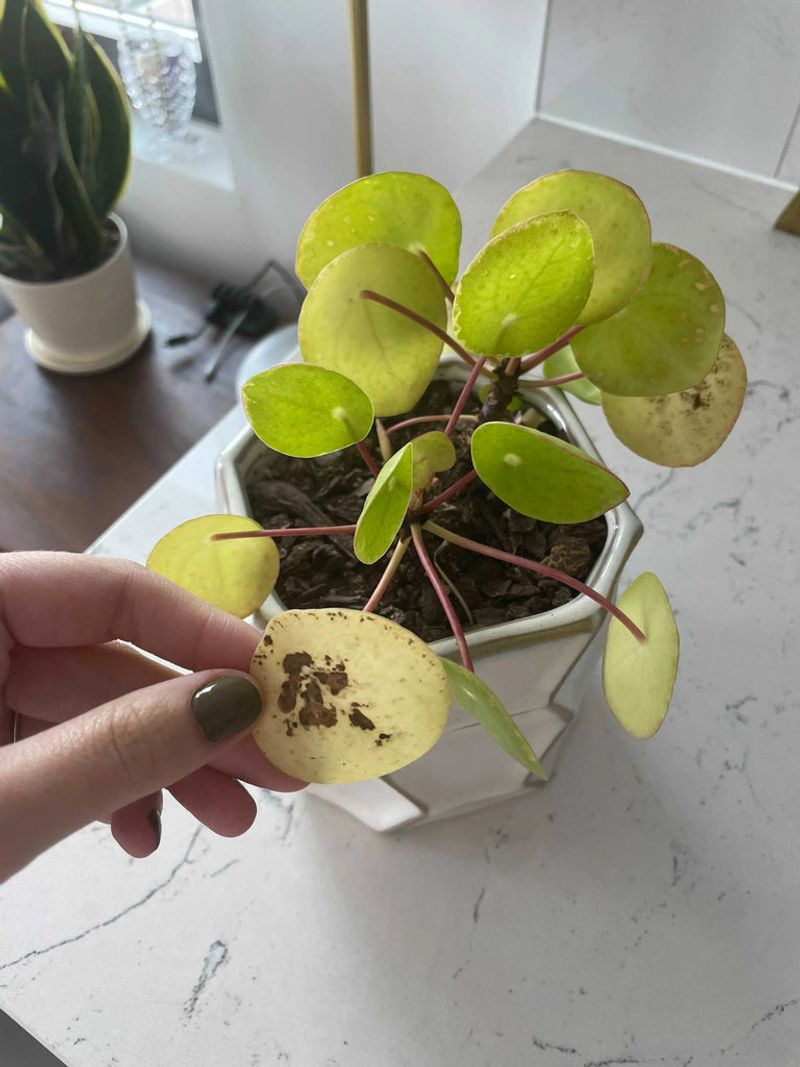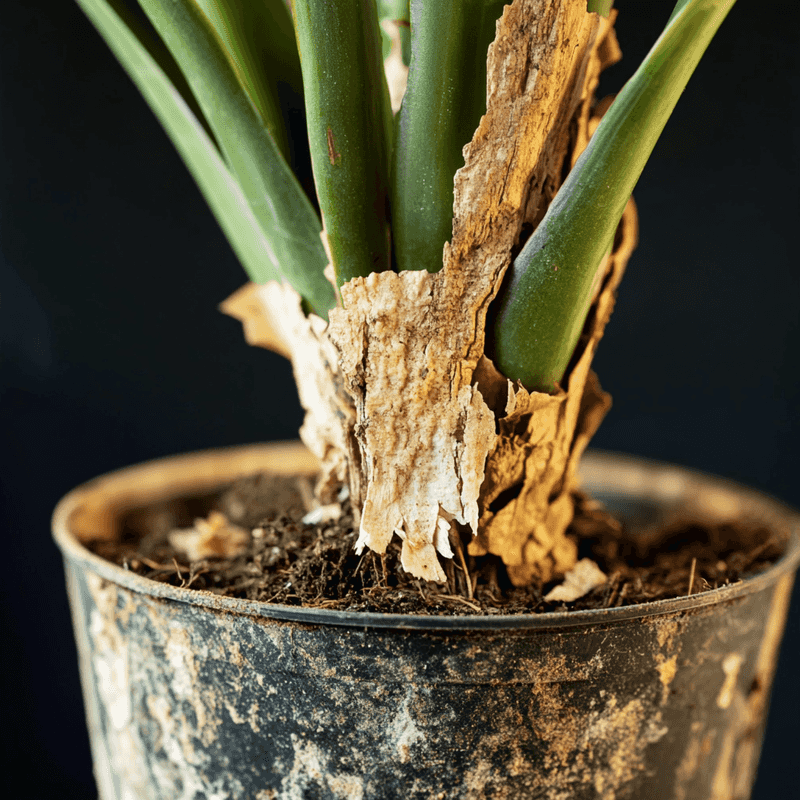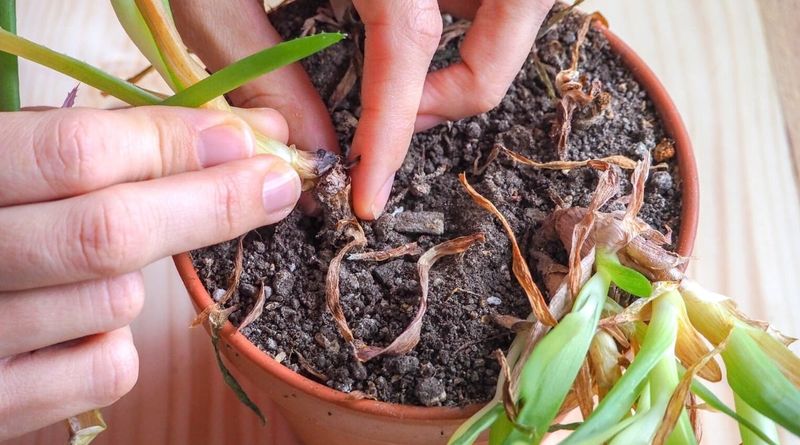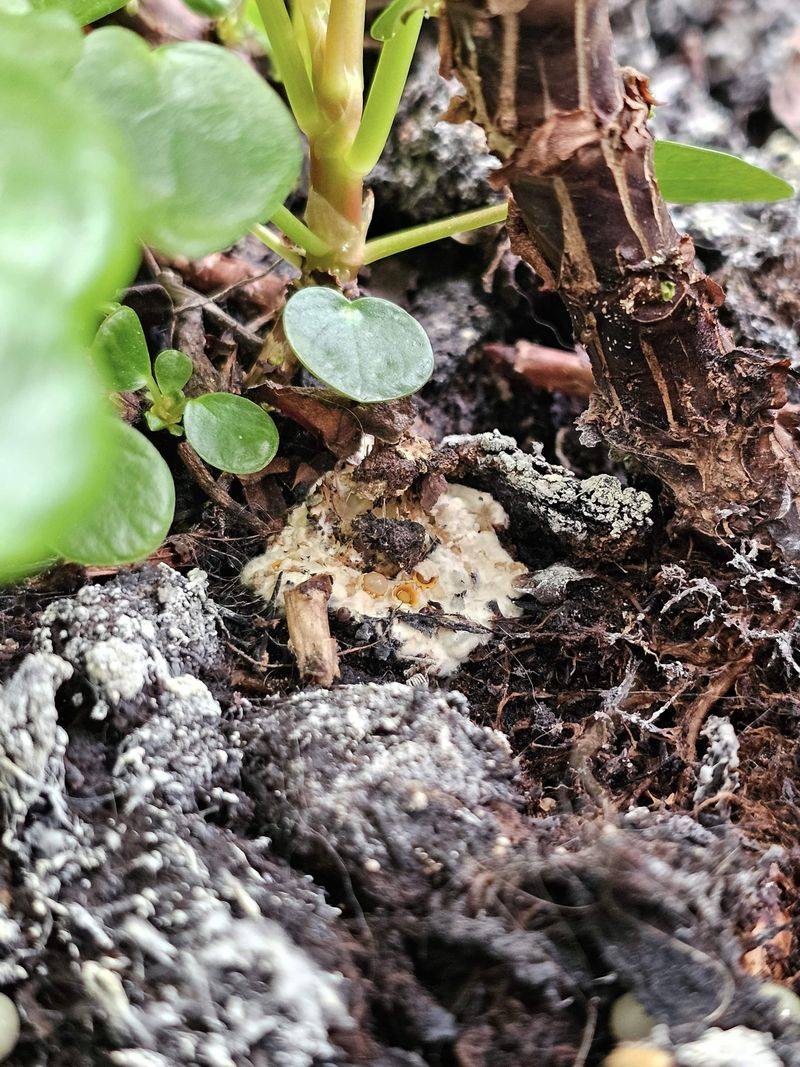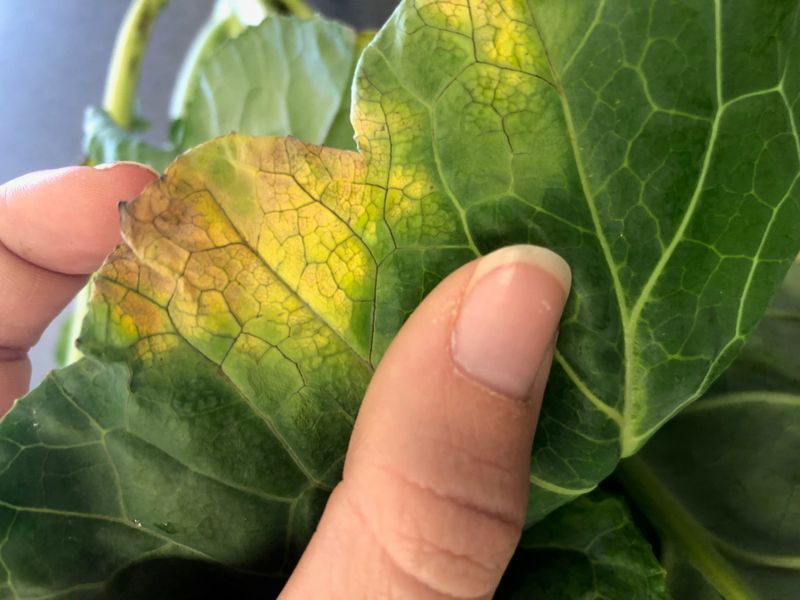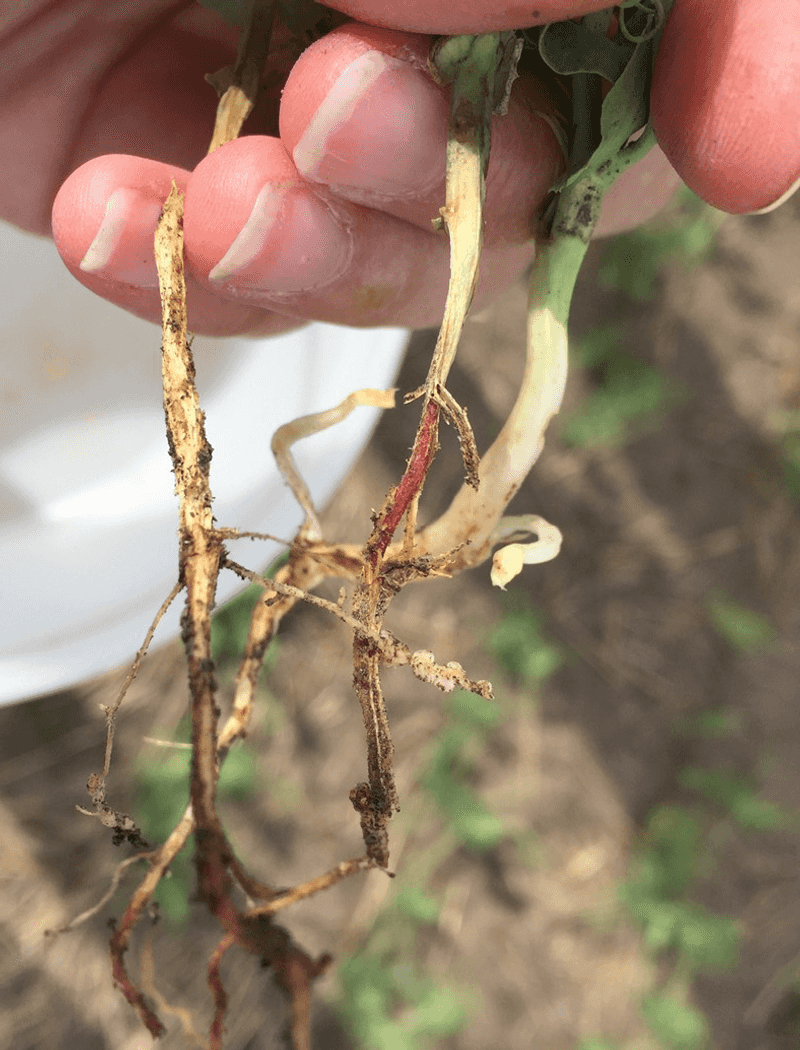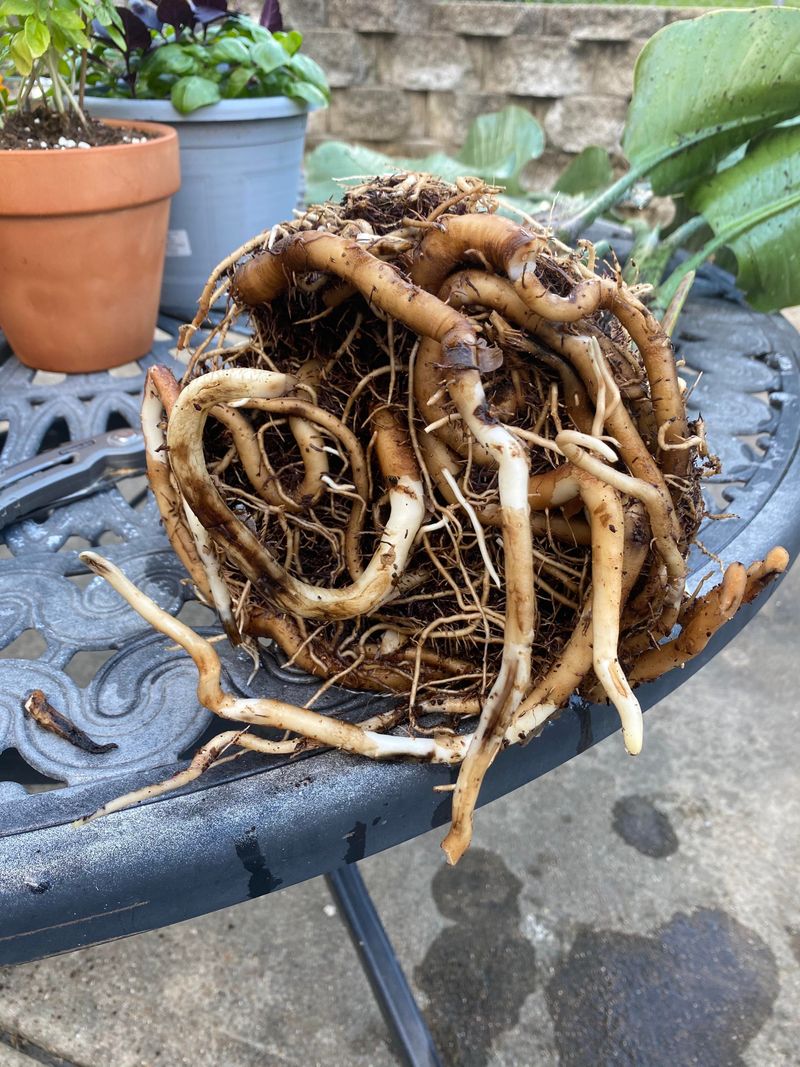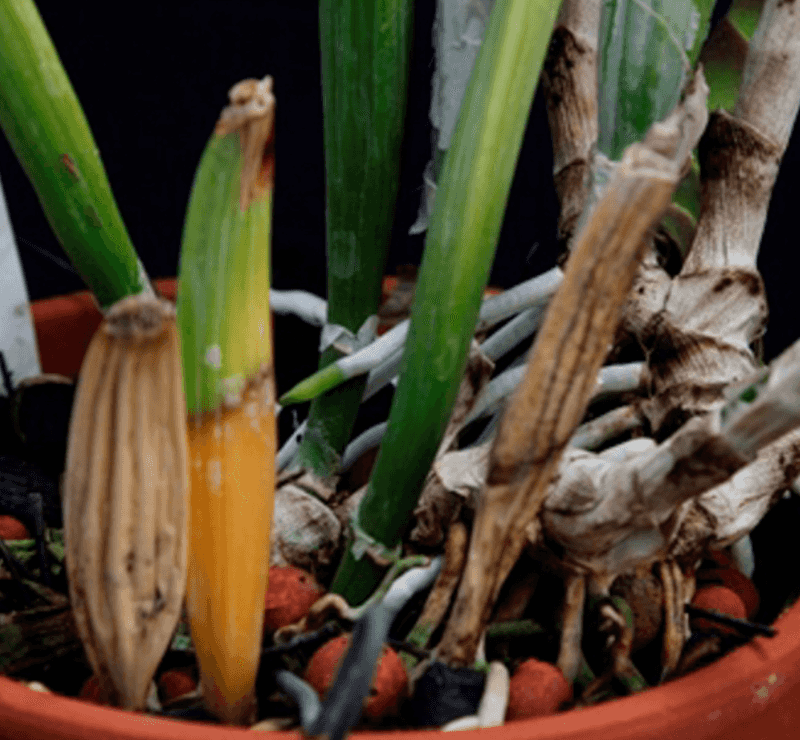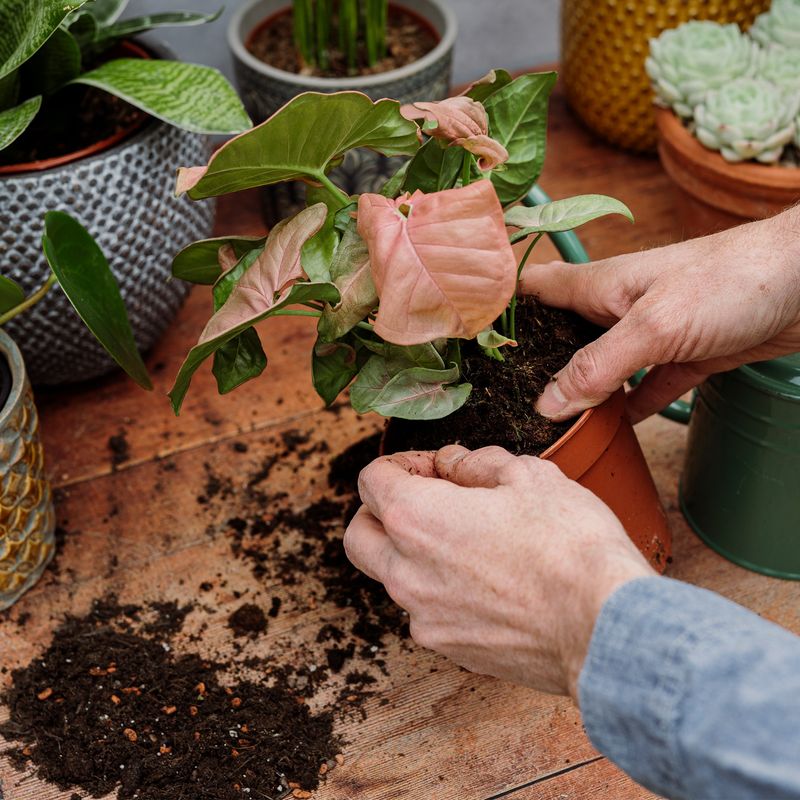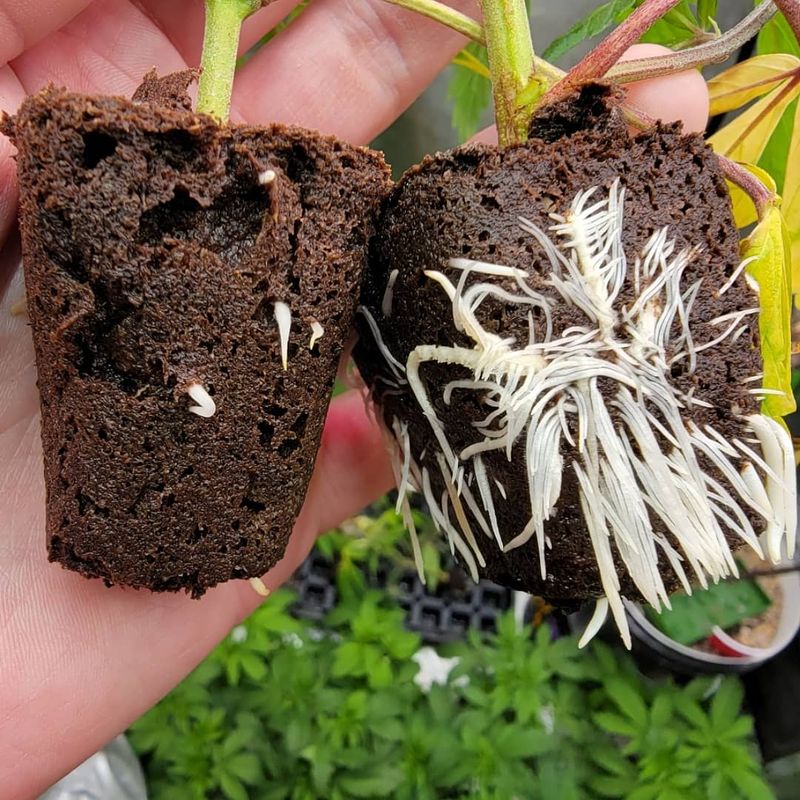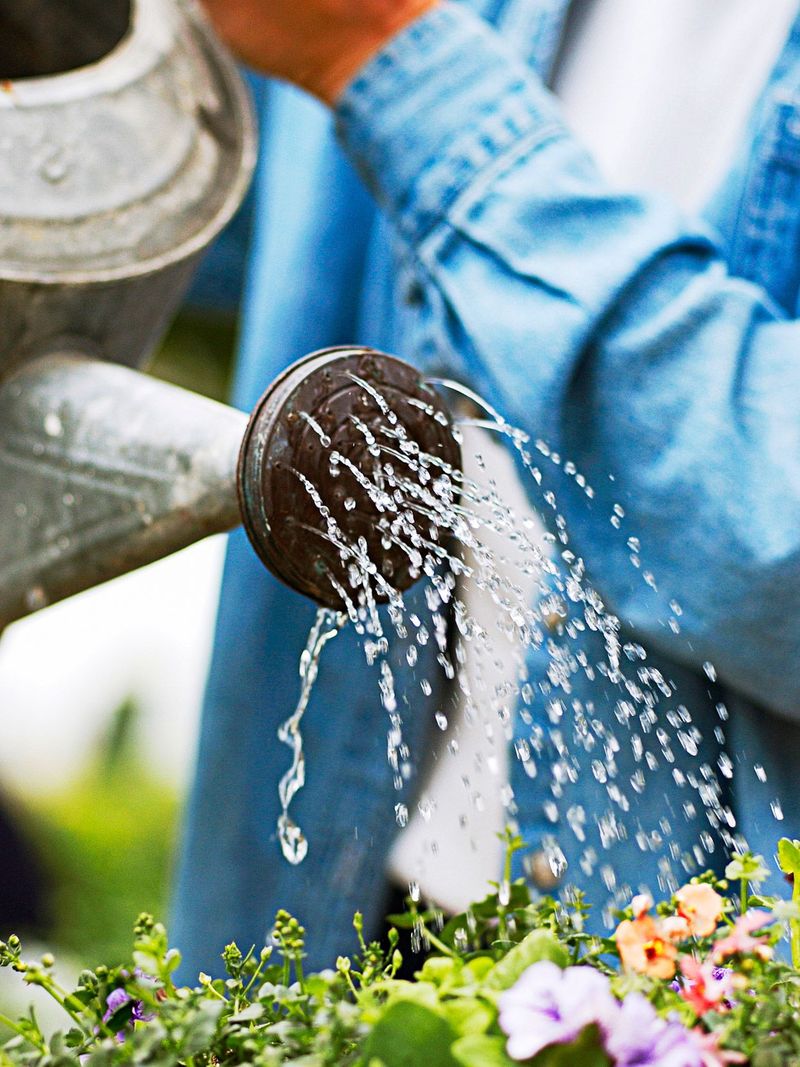Ever wake up, ready to greet your leafy friends, only to find them looking like they partied too hard the night before? Root rot is the sneaky culprit, turning fancy plants into sad, wilting wallflowers.
I’ve totally been there. One morning, I found my favorite plant looking like it had been through a storm. But don’t worry!
With a little plant TLC and a sharp eye, you can catch root rot early and save your leafy buddies.
1. Check for yellowing or wilting leaves
Oh no, those leaves! They should be fresh and green, but instead, they’re yellowing or wilting. This might be the first sign your plant is crying for help.
When root rot sets in, the plant can’t absorb nutrients properly, making leaves lose their color and strength. Yellowing leaves might not always mean an endgame, but it’s definitely a call for action.
Keep an eye out for persistent wilting even after you’ve pampered your plant with water. Time to dig deeper, literally.
2. Look for mushy, discolored roots
Mushy roots are as gross as they sound. These should be firm and white, not brown or black, and definitely not mushy.
If you gently tug on your plant and its roots feel like a squishy mess, you’re likely dealing with root rot. Checking the root condition is crucial because once they become mushy, the plant’s survival clock starts ticking.
Use a gentle hand to pull the plant from its pot for a better look. Don’t worry, your plant will appreciate the attention.
3. Test soil drainage to ensure it’s not waterlogged
Ever think about your plant’s shoes? Soil is their footwear, and if it’s soggy, they’re definitely not happy.
Waterlogged soil can strangle your plant’s roots, cutting off essential oxygen and paving the way for root rot. Ensure your pot has good drainage holes, and never let the plant sit in excess water.
If water pours out of the bottom after watering, that’s a good sign! Keep the soil just moist enough, like a well-wrung sponge. Your plant will thank you with a cheerier vibe.
4. Inspect for a foul odor from the soil
Plants shouldn’t smell like last week’s leftovers, but sometimes they do, thanks to root rot. A foul odor from the soil signals that something’s amiss.
It’s like the plant’s way of saying, “Help me!” If you notice a stink, it’s time to investigate further. The smell often comes from decomposing roots and bacteria.
Your nose knows. Don’t ignore it! Investigating a stinky situation can reveal hidden issues before they become fatal.
5. Gently pull the plant from the soil to examine the roots
Ever feel like playing doctor? When your plant looks sickly, it’s time to check beneath the surface. Carefully pull the plant from its pot to take a peek at its roots.
Healthy ones are firm and white, unlike their rotten counterparts. This examination can reveal a lot about your plant’s health.
It’s a bit like uncovering a hidden secret, except this one can save your plant’s life. Just be gentle; your little buddy is counting on you for a thorough check-up.
6. Watch for slow plant growth or stunted development
Is your plant the runt of the litter? Slow growth can be a subtle sign of root rot. While others around it flourish, your plant might hang back, struggling to keep up.
This lag in growth happens when roots are too damaged to provide necessary nutrients. If your plant seems stuck in time, a root check could confirm suspicions.
Remember, even the smallest sign of stunted growth could mean roots are rotting beneath the soil. Time to play detective!
7. Look for dark, blackened roots
Dark roots? That’s a red flag waving frantically. Healthy roots are always pale or white. Blackened roots mean trouble and can signal advanced root rot.
Spotting these dark roots requires immediate action. It’s like finding out your fridge has stopped working. Time to throw out the spoiled stuff and fix the problem.
Ignoring this sign could spell doom for your plant, so act fast to cut away the bad and save the good.
8. Test soil moisture regularly to avoid overwatering
Forget to check soil moisture? It’s like leaving the house with the oven on! Overwatering is often the silent killer leading to root rot.
Using a moisture meter can save your plant from drowning. Checking regularly helps ensure your plant gets just enough water. You can feel like a moisture maestro, keeping the delicate balance.
And remember, just because the top looks dry, doesn’t mean the roots are thirsty. Always dig deeper to get the real picture.
9. Check for root decay after repotting
Repotting time is like a fresh start for your plant, but don’t forget to check those roots! After repotting, monitor for any signs of root decay, which can mean trouble brewing below.
Even after moving to a new pot, rot can linger and worsen. Checking for decay ensures your plant’s new home is a healthy one.
It’s like checking the foundation before moving into a new house, making sure everything is solid and safe for your plant’s future.
10. Examine plants for premature leaf drop
Leaves dropping like flies? That’s more than just a seasonal shed. Premature leaf drop can indicate root rot is in the house.
When roots fail, leaves lose their grip and jump ship, leaving your plant looking bare. It’s like your plant is throwing a tantrum, shedding leaves in protest.
This calls for a root check, to see if rot is the root cause. Catching this early can stop further leaf loss and save the plant from a bare future.
11. Identify root rot if the plant wilts despite watering
Watering and still wilting? Something fishy is definitely up. If your plant continues to droop even after a drink, root rot might be the sneaky culprit.
Wilting despite watering suggests that the roots can’t absorb water properly, likely because they’re rotting.
It’s like trying to quench your thirst with a broken straw. Investigate those roots to confirm the suspicion and take action to revive your plant’s perkiness.
12. Inspect the base of the plant for a soft, rotting stem
That soft stem isn’t a good sign! At the base, if you feel a squishy stem, it’s time to worry about root rot. The base should be firm and strong, a solid foundation for your plant.
Squishiness signals decay and trouble beneath the soil. Ignoring this can lead to your plant toppling over, unable to support itself. Check and address immediately to save your plant from a wobbly demise.
13. Look for signs of fungal growth on roots or soil
Fungi among us? Not the buddies your plant was hoping for. Fungal growth on roots or soil often partners with root rot, making a bad situation worse.
Address this growth quickly as it can spread, putting more stress on an already struggling plant. Quick action can curb the rot and keep those pesky fungi at bay.
14. Monitor plants for frequent yellowing of leaves
Yellow leaves aren’t always a fashion statement. Frequent yellowing signals that root rot might be in the picture.
This isn’t just a one-time deal. Recurring yellowing means something’s up with nutrient absorption. The roots might be in trouble, crying out for help.
By catching this early and checking the roots, you can prevent the condition from worsening and restore your plant’s true colors.
15. Check for discolored streaks along roots
If you notice discolored streaks on your plant’s roots, it’s a sign that something’s off. Likely root rot starting to take hold. Think of it like spotting a crack in your windshield before it spreads everywhere.
The sooner you catch it, the better. Taking action right away can stop the rot in its tracks, and save your plant from bigger problems down the road.
So, keep an eye on those roots. After all, a healthy plant is a happy plant, and nobody wants a plant meltdown on their watch!
16. Treat with a fungicide for mild root rot
Got mild root rot? Fungicides can be your plant’s best friend. Applying a fungicide can help nip the problem in the bud before it becomes a full-blown disaster.
Think of fungicide as a superhero swooping in to save the day, offering a fighting chance. Just make sure to follow instructions carefully, as too much of a good thing can become a bad thing.
With proper treatment, you can give your plant a new lease on life.
17. Remove and trim infected roots
Time for a trim! If your plant’s roots are infected, the rotten ones must go. Trimming them away is like giving your plant a fresh haircut, ready for new beginnings.
This process might seem drastic, but it’s essential to stop the spread of rot. Removing the bad parts can pave the way for healthy growth.
Think of it as pruning away negativity to let positivity flow, ensuring a healthier future for your plant.
18. Repot with fresh, well-draining soil
Repotting isn’t just for kicks, it’s a lifeline. Fresh, well-draining soil can make a world of difference for a plant suffering from root rot.
The new soil provides a fresh environment, free from the pathogens that caused the rot. It’s like relocating to a new neighborhood with better amenities.
This change can rejuvenate your plant, giving it the chance to bounce back and thrive in its improved home.
19. Use a root stimulator or growth hormone to encourage healthy root growth
Need a growth boost? Root stimulators and growth hormones can be your plant’s secret weapon. These products enhance root growth, helping your plant recover from root rot.
Using these is like giving your plant a health tonic, kickstarting its journey to recovery. Just remember, balance is key. Too much can overwhelm your plant.
With the right dosage, you’ll be nurturing strong roots that can support lush foliage above.
20. Adjust watering practices to prevent future root rot
Watering is an art! Overwatering can be as harmful as underwatering, leading to dreaded root rot. Adjust your watering practices to keep your plant happy.
Check the soil before reaching for the watering can. It’s like checking if you need an umbrella before heading out. Being mindful of your plant’s needs can prevent future issues.
By tailoring your watering routine, you’re setting your plant up for success, ensuring it stays healthy and thriving.


